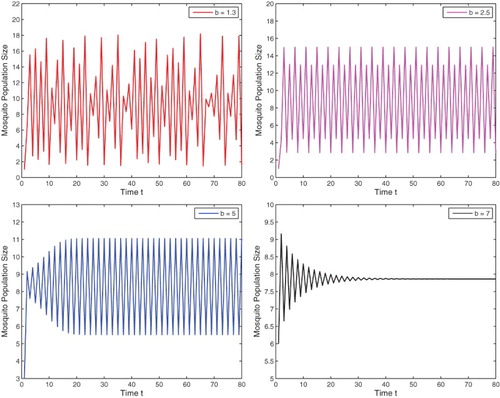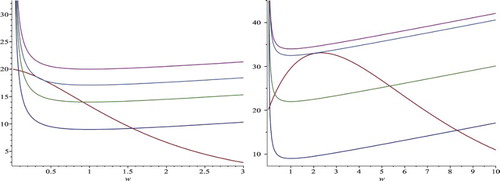Figures & data
Figure 1. With parameters and
as given in Example 3.2, four different values
, are used. With the same initial value
, chaotic behaviour is exhibited in the upper left figure, and then stable 4-cycle, 2-cycle, and 1-cycle are presented in the upper right figure, the lower left and right figures, respectively.

Figure 2. This is a schematic diagram to show the existence of positive fixed points. The figures on the left and right correspond to and
, respectively. The intersection between the curve of
and the curve of
gives a positive fixed point of Equation (Equation19
(19)
(19) ). Keep the curve of
fixed. As parameter b increases gradually from zero to exceeding
, the curve of
moves up gradually. Accordingly, there exist two, one, or no intersections, and hence Equation (Equation19
(19)
(19) ) has two, one, or no positive fixed points.

Figure 3. The model equation for the upper figure (a) is (Equation8(8)
(8) ) with the constant releases. The lower two figures (b) on the left and (c) on the right are based on equation (Equation14
(14)
(14) ) where the number of releases is proportional to the wild mosquito population size, and Equation (Equation19
(19)
(19) ) where the number of releases is proportional to the wild mosquito population size plus the saturation, respectively. We fix the same parameters
and
, and use b as the bifurcation parameter. For
, there exists a unique positive fixed point. As b decreases, backward period-doubling bifurcations occur for all of the model equations. Notice, in all of the figures,
corresponds to the b point where there exists two fixed points on the left but only one on the right. The threshold value
corresponds to the b value where there is a positive fixed on the left and no positive fixed point on the right.

